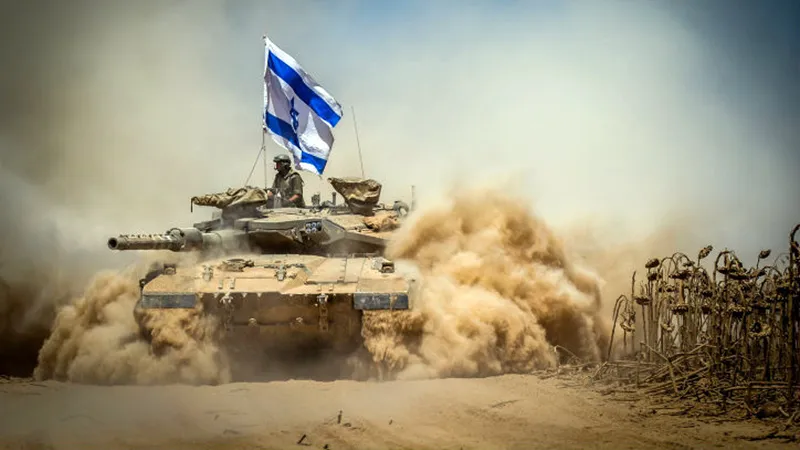The Gulf Railway Project (GCC Railway) has ambitiously attempted to develop a transnational infrastructure plan to link all six Gulf Cooperation Council (GCC) member states via a 2,177-kilometre rail network. Conceived in 2009, the railway is designed to run from Kuwait City to Muscat, passing through Saudi Arabia, Bahrain, Qatar, and the United Arab Emirates (UAE). This project, while transporting both passengers and freight, can facilitate greater economic integration, supply chain resilience, and green mobility across the Gulf.
The project is strategically significant for multiple reasons. The Gulf Railway can develop as the backbone of a future GCC customs union, increasing intra-GCC trade, which is roughly 10 percent of total exports. This is substantially lower than economic blocs like the European Union (EU), where over half of trade occurs within the bloc for both goods and services. Thus, the GCC railway project can enable a growth in intra-regional trade by overcoming connectivity barriers and complementing ports to boost regional competitiveness. Beyond the region, the project can also strengthen GCC’s geoeconomic positioning by linking seamlessly with transnational corridors like the India-Middle East-Europe Economic Corridor (IMEC). These links could elevate the GCC as a central node in Eurasian connectivity, reducing East-West trade dependence on traditional maritime chokepoints like the Strait of Hormuz and Bab el-Mandeb, often threatened by geopolitical instability, thereby improving trade and logistics continuity. This initiative also builds on the ambitions of Gulf economies to diversify away from oil by presenting a low-emissions logistics backbone that aligns with their net-zero ambitions. Etihad Rail states its rail transport can reduce road emissions by 21 percent annually by 2050, taking up to 300 trucks off the roads for every train journey and removing 8.2 million tonnes of CO2 per year.
While the benefits of the GCC railways project are multifold, with important spillover benefits for the entire Gulf, its implementation has been derailed and has been stalled for over 14 years. This paper aims to identify the key reasons why the project’s progress has been stunted and offer solutions to accelerate its implementation.
Why has the GCC Railway Project Faced Delays?
Progress on the Gulf Railway has been uneven, with the UAE and Saudi Arabia advancing furthest, while Kuwait, Bahrain, and Oman have faced the most significant delays. The UAE’s Etihad Rail has successfully connected the Saudi border to Fujairah through all seven emirates, establishing the first operable connection with another GCC state. Oman and the UAE signed a landmark agreement in 2023 to launch a joint venture called Oman–Etihad Rail Company, tasked with linking Sohar and Abu Dhabi in 100 minutes. Saudi Arabia has developed extensive domestic rail infrastructure, but its segments directly contributing to GCC integration, such as connections from Dammam to Al-Jubail and from Al-Khafji to Kuwait, are still under development. Qatar has already built a modern rail network meeting GCC standards, but remains unconnected to the broader system. Bahrain has made less tangible progress; it has no national railway and is only planning for a light rail system. The planned Friendship Bridge between Bahrain and Qatar remains at pre-construction stages. Oman is yet to break ground on its 2,135 km national railway network. Most cross-border segments—including Saudi-Qatar, Saudi-Kuwait, Qatar-Bahrain, and Bahrain-Saudi—remain either in early planning or stalled, undermining the GCC Railway’s goal of seamless regional integration.
While the strategic logic of the Gulf Railway is robust, the project has faced prolonged delays due to a mix of conceptual, political, and financial challenges. Conceptually, the Gulf Railway’s supranational nature requires intense policy harmonisation, including customs, regulations, technical standards, and border control agreements—none of which have kept pace with construction. For example, questions remain around who will operate the trains across national borders, how cargo will be cleared at borders, and whether the rail will enjoy regulatory fast-tracking like airports and ports.
These conceptual hurdles are further compounded by political issues like the 2017 Qatar crisis, when certain GCC states cut ties with Qatar, severely disrupting regional planning. Although ties were restored in 2021, the rift led to the suspension of Qatar’s segment, delaying funding and planning across multiple states due to missing cross-border connectivity.
In addition to this, financial challenges have also stalled the progress of the project. Initial cost estimates for the full project hovered around US$250 billion, but no unified GCC fund was established to underwrite it. Wealthier states like the UAE and Saudi Arabia have pushed ahead independently, while Kuwait, Bahrain, and Oman have faced fiscal constraints, especially post-2014 oil price crash and during COVID-19. Further, the railway competes with national ambitions such as the Qatar World Cup and NEOM, which can divert funding away from railways. Smaller countries like Bahrain also view rail as a lower priority than airports, metros, or roadways that serve immediate domestic needs.
What can be Done to Fast-Track the Completion of GCC Railways?
To fast-track the completion of the GCC Railway, the region must adopt a multi-pronged approach rooted in supranational governance, innovative financing, phased infrastructure strategy, legal frameworks and public-private partnerships.
First, while the establishment of the GCC Railways Authority (GCCRA) in 2021 was a positive step toward institutional coordination, its role must now evolve beyond coordination into enforcement. The authority should be empowered to mandate compliance with unified technical standards, construction milestones, and cross-border protocols, much like the European Union’s European Railway Agency (ERA), which enforces the Trans-European Transport Network (TEN-T) with binding deadlines. Without this enforcement capacity, progress will remain piecemeal and subject to shifting national priorities.
Second, equally important is the creation of a dedicated GCC Railways Fund. Currently, each country is expected to finance its portion of the railways. However, by pooling financial resources from wealthier member states like the UAE and Saudi Arabia and supplementing them with concessional finance from institutions such as the Islamic Development Bank or the Asian Infrastructure Investment Bank, the fund can support fiscally constrained members like Bahrain, Kuwait, and Oman. It will be important to remind wealthier contributors that the railway’s completion enhances the entire region’s trade competitiveness and geoeconomic clout, and thus justifies a redistributive financing mechanism.
Third, a phased approach to construction should also be adopted. Drawing on the East African Railway Master Plan, the GCC can prioritize high-impact segments, such as the UAE–Oman link from Abu Dhabi to Sohar, the Saudi–UAE–Qatar route via Salwa, and the Kuwait–Saudi Arabia segment from Nuwaiseeb to Al-Khafji, as anchor corridors that demonstrate early success, attract users, and build momentum for further integration. These segments serve important industrial hubs and ports, aligning closely with the GCC’s freight-driven logistics profile. Focusing on freight services first, rather than lesser viable long-distance passenger routes, will also be critical.
Fourth, accelerating legal and regulatory harmonisation is vital. ASEAN’s Singapore–Kunming Rail Link provides a good model of how legal protocols, such as customs clearance, operator licensing, and cargo inspection, can be standardised even among diverse states. The GCC must fast-track its own set of harmonised regulations, including a digital customs platform and shared safety benchmarks, preferably under the leadership of the GCCRA, with mutual recognition of standards. This soft infrastructure is as critical as the physical rail lines in unlocking operational efficiency.
Finally, Public-Private Partnerships (PPPs) should also be actively pursued, particularly for freight corridors. This requires transparent bidding processes and performance-based contracts by drawing from models in China and North America, where commercial freight operations function well under public oversight.
The GCC should leverage rail diplomacy to rebuild trust and institutionalise cooperation. The 2017 Qatar crisis revealed how political fragmentation can derail regional infrastructure. Regular ministerial-level summits on transport, modelled on the 2024 Doha GCC Railway Meeting, should be held to monitor progress, resolve disputes, and reinforce shared commitment. Railway integration should be positioned as a strategic tool for regional unity, economic security, and diversification beyond oil.
By learning from global models, the GCC can transform the Gulf Railway from a delayed ambition into a connectivity backbone. The vision already exists, but what is now needed is a greater institutional will.
Samriddhi Vij is an Associate Fellow, Geopolitics, at the Observer Research Foundation–Middle East.












